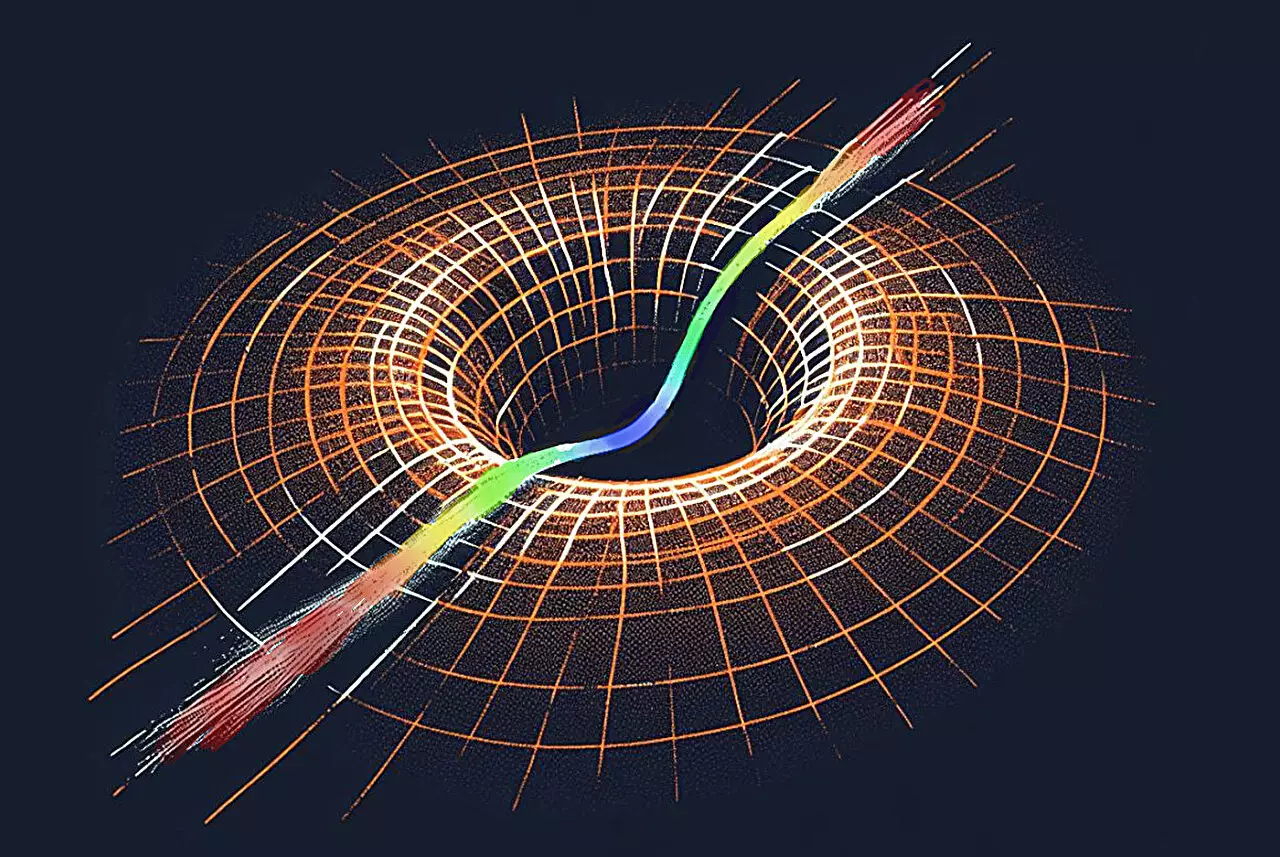Whenever light interacts with matter, it has long been observed that light appears to slow down. This phenomenon has been explained by standard wave mechanics, which can describe most daily occurrences involving light. However, a recent study by researchers from the University of Eastern Finland and Tampere University has uncovered a new perspective on this phenomenon by introducing the concept of the accelerating wave equation. This groundbreaking study, titled “Time-varying media, relativity, and the arrow of time,” explores the implications of this new equation and its connection to the arrow of time.
The traditional wave equation, which assumes a constant speed of light, has been the standard framework for analyzing light-matter interactions. However, Assistant Professor Matias Koivurova questioned this assumption and derived an alternative wave equation that allows for the speed of light to vary with time. This concept led to the development of the accelerating wave equation. Initially, solving this equation seemed puzzling, but with the help of the Theoretical Optics and Photonics group led by Associate Professor Marco Ornigotti, the researchers made significant progress.
One of the remarkable outcomes of this study is the identification of a well-defined direction of time in relation to accelerating waves. Unlike thermodynamics, which determines the direction of time based on increasing entropy, the accelerating wave equation restricts the flow of time to move forward and prohibits backward time flow. This finding provides additional evidence for the existence of a fixed direction of time for single particles, despite the lack of a definitive mechanism for such directionality.
The accelerating wave equation, derived from geometrical considerations, encompasses a wide range of wave behaviors. Consequently, the fixed direction of time emerges as a general property of nature. This fundamental characteristic applies to all wave phenomena and suggests that the direction of time extends beyond macroscopic systems to the behavior of individual particles.
The framework of the accelerating wave equation offers insights into the long-standing Abraham-Minkowski controversy regarding the conservation of momentum in light waves. Experimental evidence has supported both sides of the debate, but the researchers’ findings align with Minkowski’s viewpoint. According to their analysis, the momentum of the wave is conserved, contradicting Abraham’s assertion that momentum decreases as light enters a medium. Relativistic effects play a crucial role in this conservation, where a “proper time” can be ascribed to the wave, similar to the concept in general relativity.
Time-varying Media and Wave Modeling
The accelerating wave equation also provides a powerful analytical tool for modeling waves in time-varying media. In such materials, light encounters sudden and uniform changes in the properties of the medium, which cannot be explained by the standard wave equation. The accelerating wave equation allows researchers to tackle these previously numerically inaccessible situations and gain a deeper understanding of wave propagation within time-varying materials. One intriguing example is the analysis of a hypothetical material known as a disordered photonic time crystal, which exhibits exponential changes in the wave’s speed and energy. The researchers’ formalism uncovers that these energy variations arise from the wave’s experience of a curved space-time, leading to local violations of energy conservation.
Broader Implications
The implications of this research extend far beyond understanding everyday optical effects. The insights provided by the accelerating wave equation can impact laboratory tests of the general theory of relativity, shedding light on the relationship between gravity and the behavior of light waves. Moreover, by illuminating the connection between the acceleration of waves, time dilation, and length contraction, this work offers deeper insights into the nature of time itself. Ultimately, these findings contribute to our understanding of why time has a preferred direction in the universe.
The discovery of the accelerating wave equation marks a significant breakthrough in the study of light-matter interactions. By challenging the assumption of a constant speed of light, this research not only unveils new insights into the behavior of waves but also sheds light on the arrow of time. This novel perspective paves the way for further exploration and invites researchers to reconsider our understanding of fundamental concepts in physics. With its far-reaching implications, the accelerating wave equation sets the stage for future investigations into the nature of time and the fundamental laws governing our universe.


Leave a Reply